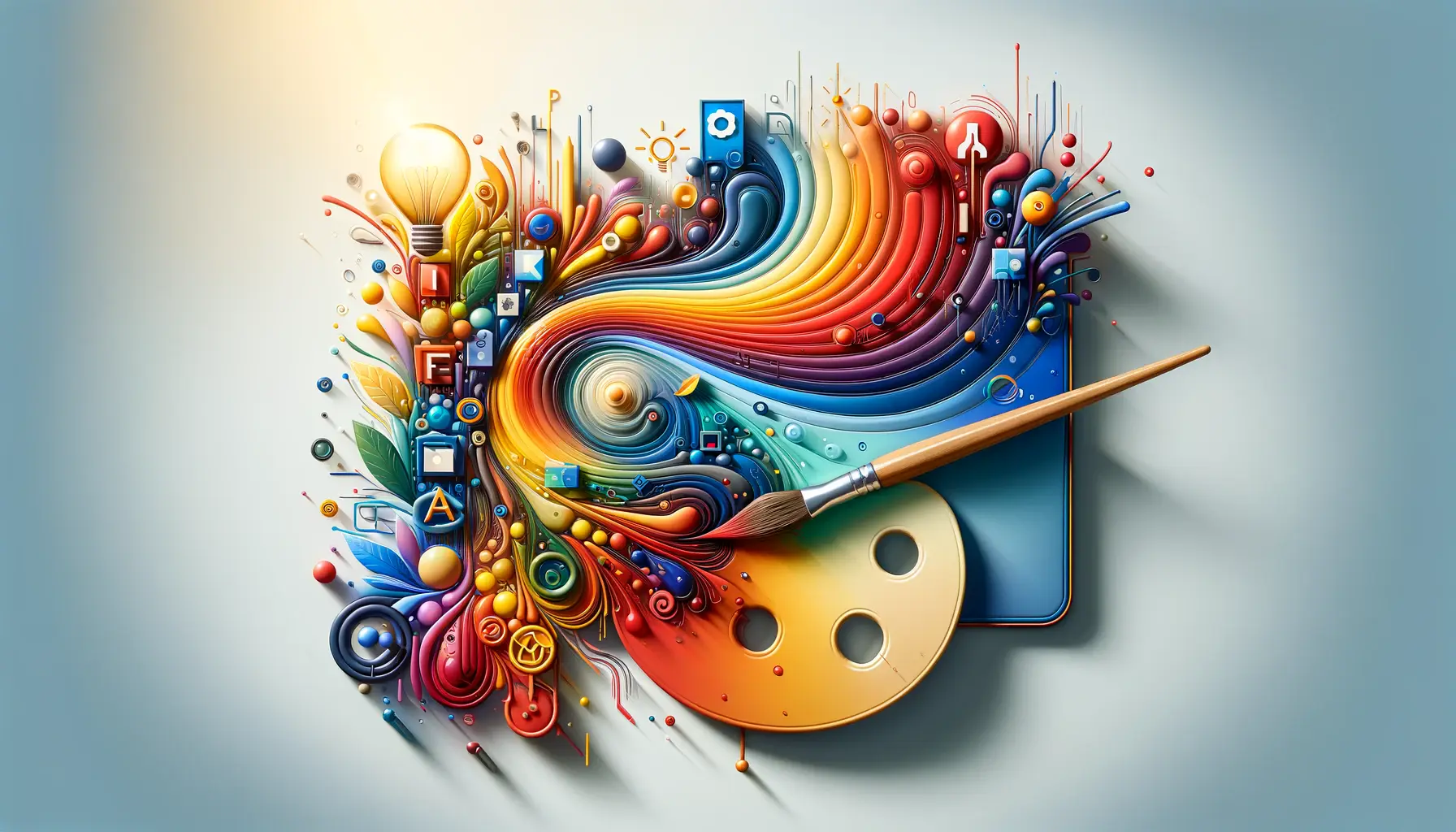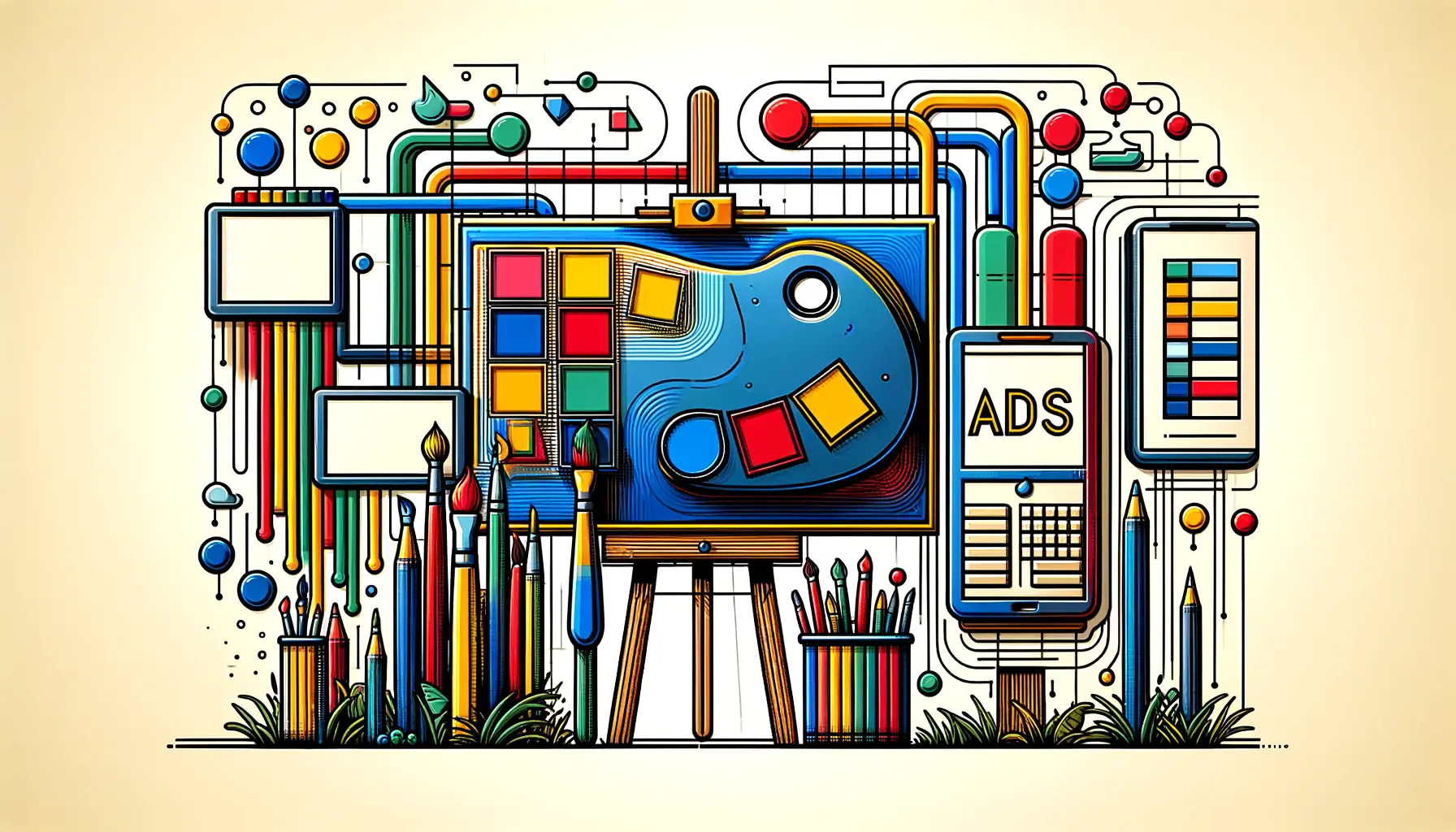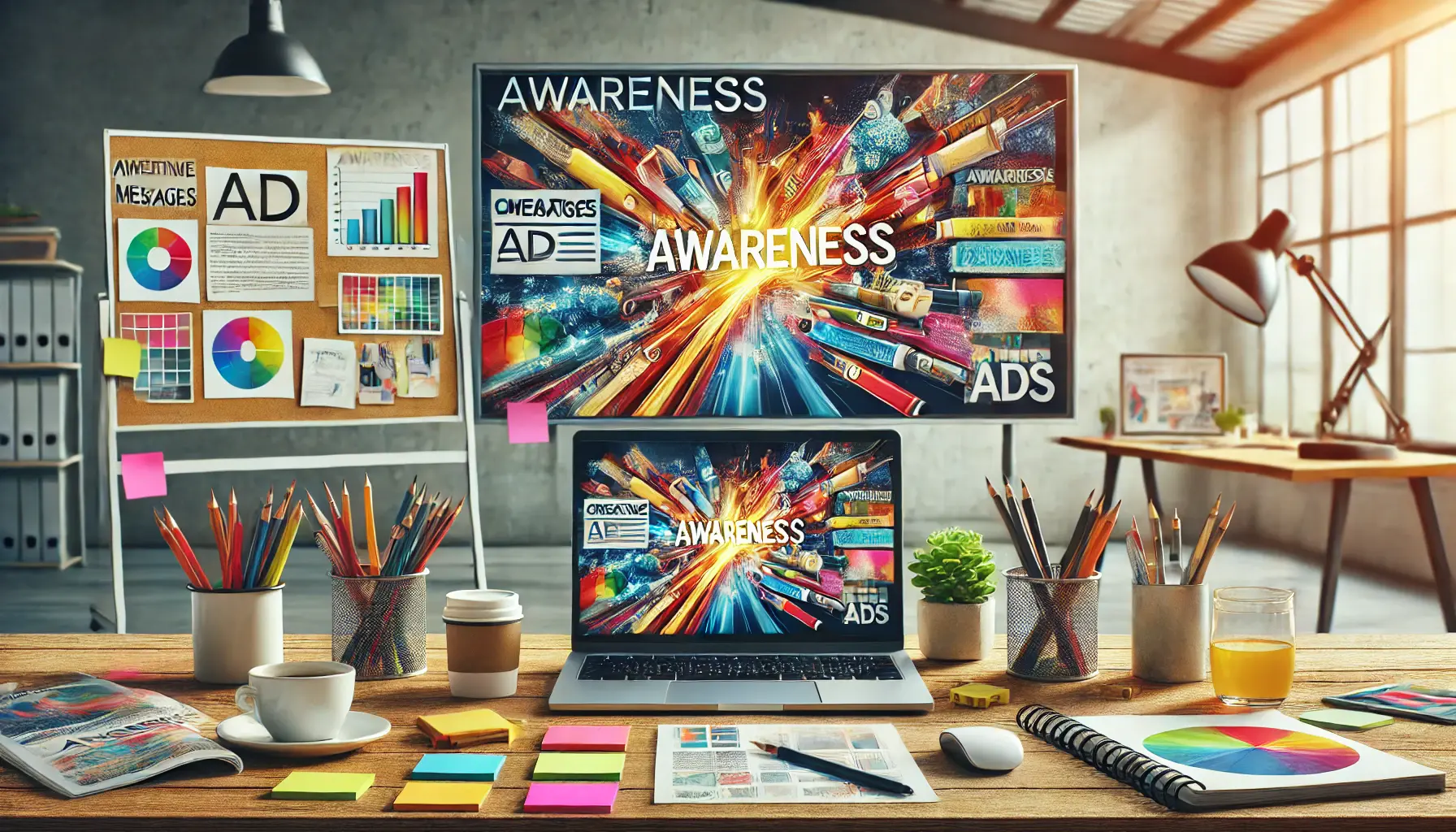In today’s digital age, where the average consumer is bombarded with countless advertisements daily, standing out in the crowded digital landscape is more crucial than ever.
Crafting compelling ad visuals for engagement is not just about creating something that looks good; it’s about designing visuals that resonate with your audience, communicate your message effectively, and ultimately drive action.
This article delves into the art and science of creating ad visuals that captivate and engage, specifically within the realm of Apple Search Ads Campaign Optimization.
Understanding the significance of ad visuals in the digital marketing ecosystem is the first step towards mastering campaign optimization.
Visuals are the frontline soldiers of any advertising campaign, especially in platforms like Apple Search Ads, where the competition for user attention is fierce.
The right visual can make the difference between a user scrolling past your ad or stopping to engage with your content.
It’s about leveraging visuals to tell a story, evoke emotions, and create a memorable experience that encourages users to take the next step.
- The Importance of First Impressions
- Understanding Your Audience
- Design Principles for Compelling Visuals
- Visual Storytelling and Emotional Connection
- Optimizing Visuals for Apple Search Ads
- Leveraging A/B Testing for Visual Optimization
- Integrating Visuals with Overall Campaign Strategy
- Conclusion: Mastering the Art of Ad Visuals for Enhanced Engagement
- FAQs on Crafting Compelling Ad Visuals for Engagement
The Importance of First Impressions
Creating a Visual Hook
The initial few seconds of user interaction with your ad can make or break the engagement.
This is where the concept of a ‘visual hook’ comes into play.
A visual hook is an element within your ad visual that grabs attention and piques curiosity.
It could be a striking color scheme, an intriguing image, or a bold headline.
The key is to create something that stands out from the sea of content vying for your audience’s attention.
Implementing a visual hook effectively requires a deep understanding of your target audience’s preferences and pain points.
It’s about creating a connection from the first glance.
For instance, if your target audience is fitness enthusiasts, using dynamic imagery that showcases movement and energy can serve as a powerful visual hook.
Optimizing Visuals for Different Platforms
Each advertising platform has its own set of rules and best practices when it comes to ad visuals.
For Apple Search Ads, the focus is on simplicity and clarity.
Since the space is limited, your visuals need to communicate your message quickly and efficiently.
This means opting for clean, high-contrast designs that are easily readable on small screens and under various lighting conditions.
Moreover, considering the platform’s unique user interface and how your ad will appear amidst other applications is crucial.
Your ad should be designed in a way that it feels native to the platform yet stands out enough to draw attention.
This might involve tailoring your visuals to match the aesthetic of Apple’s design principles while incorporating your brand’s unique elements.
Remember, the goal of your ad visual is not just to attract attention but to make a lasting impression that compels the viewer to engage further with your brand.
Understanding Your Audience
At the heart of any successful advertising campaign lies a deep understanding of the target audience.
Knowing who you are speaking to is essential in crafting ad visuals that resonate on a personal level.
This part of the article explores the strategies for gaining insights into your audience and how these insights translate into visually compelling ads.
Before diving into the creative process, it’s crucial to conduct thorough research on your target demographic.
This includes understanding their behaviors, preferences, interests, and the challenges they face.
Such insights can be gathered through various means, including:
- Market research surveys
- Analysis of social media engagement
- Customer feedback and reviews
- Competitor analysis
With a clear picture of your audience, you can begin to tailor your ad visuals to speak directly to their needs and desires.
For example:
- If your audience values sustainability, visuals highlighting eco-friendly aspects of your product can be particularly effective.
- For a tech-savvy audience, showcasing the innovative features of your product through sleek, modern design elements might resonate more.
Segmentation for Personalized Visuals
One size does not fit all when it comes to ad visuals.
Audience segmentation allows you to break down your broader target audience into smaller, more homogenous groups.
This enables the creation of personalized ad visuals that cater to the specific interests and needs of each segment.
Personalization can significantly increase the relevance of your ads, leading to higher engagement rates.
For instance, creating different ad visuals for different age groups within your target audience can ensure that the imagery, messaging, and overall design align with the generational preferences of each group.
This level of personalization makes your ads more relatable and engaging.
Leveraging data analytics tools can provide valuable insights into audience behavior, helping to refine your segmentation strategy and tailor your ad visuals more effectively.
Design Principles for Compelling Visuals
Creating visuals that capture attention and communicate your message effectively requires more than just creativity; it involves adhering to proven design principles.
These principles serve as the foundation for creating ad visuals that are not only aesthetically pleasing but also effective in driving engagement.
Let’s explore some of these key design principles.
First and foremost, simplicity is paramount.
In the context of ad visuals, less is often more.
A cluttered design can overwhelm the viewer, diluting the impact of your message.
Focus on the core elements that you want to highlight, such as:
- Your product or service
- A compelling call-to-action (CTA)
- Brand logo or name for recognition
Balance and hierarchy within your visuals guide the viewer’s eye through the ad, ensuring that they absorb the information in the intended order.
Achieving this involves:
- Using size and color to emphasize key elements
- Arranging components in a way that leads the viewer from the most to the least important piece of information
Color Psychology in Ad Design
Color plays a crucial role in ad design, influencing perception and emotions.
Choosing the right color palette can enhance the effectiveness of your ad by evoking the desired emotional response.
For example, blue can convey trust and dependability, making it a popular choice for technology and finance companies.
On the other hand, green is often associated with health and sustainability, ideal for eco-friendly products.
It’s essential to consider your brand’s color scheme and how these colors can be used within your ad visuals to maintain brand consistency and recognition.
However, don’t be afraid to experiment with contrasting colors for CTAs to make them stand out.
Typography That Talks
The choice of typography in your ad visuals is another critical element that can significantly impact readability and viewer engagement.
The font style, size, and color should be in harmony with the overall design and tone of the ad.
It’s important to choose fonts that are easy to read and reflect the personality of your brand.
For instance, a playful, handwritten font might be suitable for a brand with a youthful, energetic vibe, while a sleek, sans-serif font could be more appropriate for a tech company.
Remember, the goal of typography in ad design is not just to convey information but to do so in a way that enhances the overall impact of the visual.
Always test your ad visuals on different devices and screen sizes to ensure that the typography remains legible and the design looks good across all potential viewing scenarios.
Visual Storytelling and Emotional Connection
At its core, effective advertising is about storytelling.
Incorporating visual storytelling into your ad visuals can create a deeper emotional connection with your audience, making your message more memorable and impactful.
This section explores how to leverage visual storytelling techniques to enhance the emotional appeal of your ads.
Visual storytelling transcends mere product showcasing; it involves weaving a narrative that aligns with your brand values and resonates with your audience’s experiences or aspirations.
To achieve this, consider the following elements:
- Character: Introduce a relatable character or persona that your target audience can identify with. This could be a representation of your typical customer or even the product itself personified.
- Conflict: Present a problem or challenge that your character faces, which is also a common pain point for your audience. This sets the stage for your product or service as the solution.
- Resolution: Show how your product or service resolves the conflict, improving the character’s situation. This not only demonstrates the value of your offering but also evokes a positive emotional response.
Employing visual metaphors and symbols can add depth to your storytelling, allowing you to convey complex messages in a simple and intuitive way.
For example, using a lock and key can symbolize access or security, which might be central themes for a cybersecurity product.
Emphasizing Authenticity
In today’s advertising landscape, consumers crave authenticity.
They want to see real stories that reflect genuine experiences.
Incorporating authentic visuals, such as user-generated content or realistic scenarios, can enhance the relatability of your ads.
Authenticity builds trust, and trust drives engagement and loyalty.
Moreover, showcasing your product or service in action within a real-life context can help the audience visualize its benefits in their own lives.
This not only aids in storytelling but also provides a clear demonstration of value, making the decision-making process easier for potential customers.
True emotional engagement comes from storytelling that is both authentic and relevant. Your ad visuals should aim to tell a story that not only captures attention but also resonates on a personal level with your audience.
Optimizing Visuals for Apple Search Ads
Apple Search Ads offer a unique opportunity to place your app directly in front of potential users at the moment they’re searching for apps like yours on the App Store.
However, to truly capitalize on this opportunity, it’s crucial to optimize your ad visuals specifically for this platform.
This involves understanding the nuances of Apple Search Ads and how to design visuals that not only comply with Apple’s guidelines but also stand out in a competitive marketplace.
Firstly, it’s important to recognize that Apple Search Ads are not traditional display ads; they’re more subtle and integrated into the App Store’s search results.
This means your app’s icon, screenshots, and app preview videos play a crucial role in your ad’s visual appeal.
Here are some strategies to optimize these elements:
- App Icon: Your app icon should be visually striking and easily recognizable. It’s often the first element that users notice, so it should clearly convey the essence of your app.
- Screenshots: Use your screenshots to highlight the key features and benefits of your app. Ensure they’re high-quality and include brief, descriptive captions to guide the viewer’s understanding.
- App Preview Videos: A well-crafted app preview video can be incredibly effective in showcasing the user experience and the value proposition of your app. Keep it concise, focusing on the most compelling content to grab attention within the first few seconds.
Adapting to User Intent
Understanding the intent behind search queries on the App Store is essential for creating relevant ad visuals.
Users searching for specific types of apps are likely looking for solutions to particular needs or problems.
Tailoring your visuals to match this intent can significantly increase the chances of engagement and conversion.
For example, if your app offers meditation and mindfulness exercises, your visuals should emphasize tranquility, ease of use, and the benefits of regular practice.
This could involve serene imagery, calming color schemes, and screenshots that highlight user testimonials or ratings that attest to the app’s effectiveness.
Remember, the goal of optimizing your visuals for Apple Search Ads is not just to attract clicks but to attract the right users—those who are genuinely interested in what your app has to offer. This alignment between user intent and ad content is key to driving meaningful engagement and conversions.
Leveraging A/B Testing for Visual Optimization
The digital advertising landscape is inherently dynamic, with audience preferences and platform algorithms constantly evolving.
In this context, A/B testing emerges as a critical tool for advertisers aiming to refine their ad visuals for maximum engagement.
This methodical approach allows you to compare different versions of your ad visuals to determine which elements resonate most effectively with your target audience.
A/B testing involves creating two versions of your ad (A and B), each with one varying element, such as the image, headline, or call-to-action.
By serving these variants to similar audiences, you can gather data on performance metrics like click-through rates, conversion rates, and engagement levels.
This data provides invaluable insights into:
- Which visual elements capture attention and drive action
- How different messaging impacts audience response
- The overall effectiveness of your ad design and layout
Implementing A/B testing requires a structured approach, starting with a clear hypothesis about what change you believe will improve performance.
For instance, you might hypothesize that using a real-life image instead of an illustration will lead to a higher click-through rate.
Following the test, analyzing the results will guide your next steps in ad visual optimization.
Iterative Improvement Through Data
The true power of A/B testing lies in its capacity for iterative improvement.
Each test provides a learning opportunity, allowing you to continuously refine your ad visuals based on empirical evidence.
This iterative process helps in building a deeper understanding of your audience’s preferences and behaviors, leading to more effective ad campaigns over time.
Moreover, A/B testing can also reveal insights into broader trends and shifts in consumer behavior, enabling you to anticipate changes and adapt your strategies proactively.
By embracing a data-driven approach to visual optimization, you can ensure that your ad visuals remain compelling, relevant, and aligned with your audience’s evolving needs.
Embrace A/B testing not as a one-time task but as an ongoing practice integral to your advertising strategy. This commitment to continuous improvement will keep your ad visuals fresh, engaging, and ahead of the curve.
Integrating Visuals with Overall Campaign Strategy
While compelling ad visuals are crucial for capturing attention and engaging your audience, their full potential is only realized when they are seamlessly integrated with your overall campaign strategy.
This integration ensures that your visuals not only attract attention but also contribute to the broader objectives of your campaign, whether that’s driving app downloads, increasing brand awareness, or generating leads.
To achieve this integration, start by clearly defining your campaign goals and target audience.
This clarity will guide the creative direction of your visuals, ensuring they are designed with purpose and intention.
For instance, if your goal is to drive app downloads among young adults, your visuals should reflect the interests, aesthetics, and values of that demographic, while also highlighting the unique features and benefits of your app.
Next, consider the customer journey and how your ad visuals fit into the larger narrative.
Each visual should serve as a touchpoint that guides the viewer towards the desired action, building upon previous interactions with your brand.
This might involve:
- Using consistent branding and messaging across all visuals to reinforce brand recognition
- Creating a series of visuals that tell a story or demonstrate progress, encouraging the viewer to follow along
- Designing visuals for different stages of the funnel, from awareness to consideration to decision, each with tailored messaging and calls-to-action
Measuring Success and Making Adjustments
The effectiveness of your ad visuals should be continually monitored and measured against your campaign goals.
Key performance indicators (KPIs) such as engagement rates, conversion rates, and return on ad spend (ROAS) can provide valuable insights into how well your visuals are resonating with your audience.
Data from these metrics can inform future creative decisions, allowing you to refine and adjust your visuals for better performance.
For example, if you notice that certain visuals are consistently underperforming, you might experiment with different imagery, messaging, or calls-to-action to see if that improves engagement.
Ultimately, the integration of ad visuals with your overall campaign strategy is a dynamic process that requires flexibility, creativity, and a willingness to learn from data.
By viewing your visuals as an integral component of your marketing ecosystem, you can create more cohesive, effective campaigns that drive meaningful results.
Remember, the most successful ad campaigns are those that tell a cohesive story across all touchpoints, with visuals that not only capture attention but also clearly communicate the value proposition and inspire action.
Conclusion: Mastering the Art of Ad Visuals for Enhanced Engagement
In the realm of digital advertising, particularly within the competitive landscape of Apple Search Ads Campaign Optimization, mastering the art of crafting compelling ad visuals is not just an advantage—it’s a necessity.
The journey through understanding your audience, adhering to design principles, leveraging visual storytelling, optimizing for specific platforms, conducting A/B testing, and integrating visuals into the overall campaign strategy, culminates in a comprehensive approach to creating ad visuals that not only capture attention but also drive meaningful engagement.
Key Takeaways for Ad Visual Excellence
Reflecting on the insights shared, several key takeaways emerge that are instrumental in crafting ad visuals that resonate:
- The importance of first impressions cannot be overstated, emphasizing the need for a visual hook that grabs and retains attention.
- A deep understanding of your audience lays the foundation for visuals that connect on a personal and emotional level.
- Adhering to design principles ensures that your visuals are not only aesthetically pleasing but also effective in communicating your message.
- Visual storytelling and authenticity forge a stronger emotional connection, making your ads more memorable and impactful.
- Optimizing visuals for specific platforms, like Apple Search Ads, requires a tailored approach that aligns with platform guidelines and user expectations.
- A/B testing is a critical tool for iterative improvement, allowing you to refine your visuals based on empirical data.
- Integration of visuals with the overall campaign strategy ensures that every element works cohesively towards achieving your marketing objectives.
As we navigate the ever-evolving landscape of digital advertising, the ability to craft compelling ad visuals stands as a pivotal skill that can significantly influence the success of your campaigns.
It’s a skill that demands creativity, strategic thinking, and a relentless pursuit of improvement.
By embracing the principles and practices outlined in this article, advertisers can enhance their ability to engage audiences, drive conversions, and ultimately, achieve their marketing goals.
In conclusion, the journey to crafting compelling ad visuals is both an art and a science.
It requires a balance of creativity, strategic insight, and data-driven decision-making.
As you continue to refine your approach and adapt to new trends and technologies, remember that the ultimate goal is to create visuals that not only stand out but also resonate deeply with your audience, inspiring them to take action.
With dedication, experimentation, and a keen eye for design, you can master the art of ad visuals and propel your campaigns to new heights of success.
If you're seeking expertise in Apple Search Ads campaigns, visit our service page for professional management!
FAQs on Crafting Compelling Ad Visuals for Engagement
Discover answers to common questions about creating engaging ad visuals that captivate and convert.
Compelling ad visuals combine creativity, relevance to the target audience, and clear messaging to capture attention and encourage engagement.
Understanding your target audience is crucial for tailoring visuals that resonate with their interests, preferences, and needs, driving higher engagement.
Yes, incorporating storytelling into ad visuals can evoke emotions, making your message more memorable and impactful.
Color significantly affects perception and emotion, making it a powerful tool to convey messages and evoke desired responses in ad design.
A/B testing allows advertisers to compare different visual elements, identifying which versions resonate best with the audience for optimization.
Simplicity ensures that your message is clear and easy to understand, making it more likely for viewers to engage with your ad.
Optimize by focusing on high-quality app icons, screenshots, and preview videos that clearly showcase the app’s value and user experience.
The key is ensuring that visuals align with overall campaign goals, messaging, and the customer journey, creating a cohesive and effective campaign.












